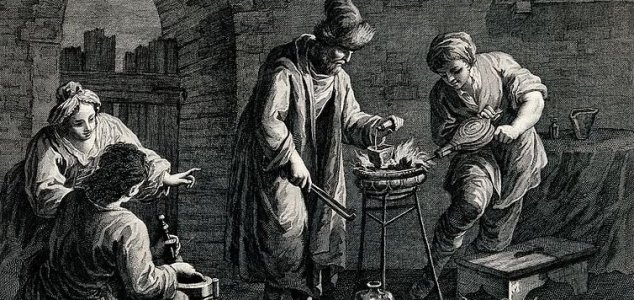
Alchemy was popular up until the 18th century.
A 17th-century alchemy manuscript written by Sir Isaac Newton has been found in a private collection.
The world-famous physicist, whose laws of motion and gravitation would go on to dominate our understanding of the physical universe for several centuries, is also known to have written down extensive notes on the subject of alchemy – the precursor of modern chemistry.
At the time, alchemists believed that it was possible to break down metals in to their constituent parts and transmute them in to more valuable ones such as gold and silver.
Now one of Newton’s original alchemical manuscripts, one detailing a recipe needed to create a magical philosopher’s stone – something that was once believed to hold the key to immortality – has turned up at an auction at Bonhams in Pasadena after being buried in a private collection for years.
The hand-written recipe, which details how to produce “philosophic” mercury, was originally written by George Starkey, an American alchemist who moved to England in 1650.
“This manuscript links Newton’s alchemical practice to the American figure George Starkey,” said rare book curator James Voelkel. “He’s probably America’s first renowned, published scientist.”
Newton’s notes, which sold at auction to the Chemical Heritage Foundation (CHF) in Philadelphia, are now set to be published online to make them available for further study and analysis.
Originally posted 2016-03-30 21:53:25. Republished by Blog Post Promoter













